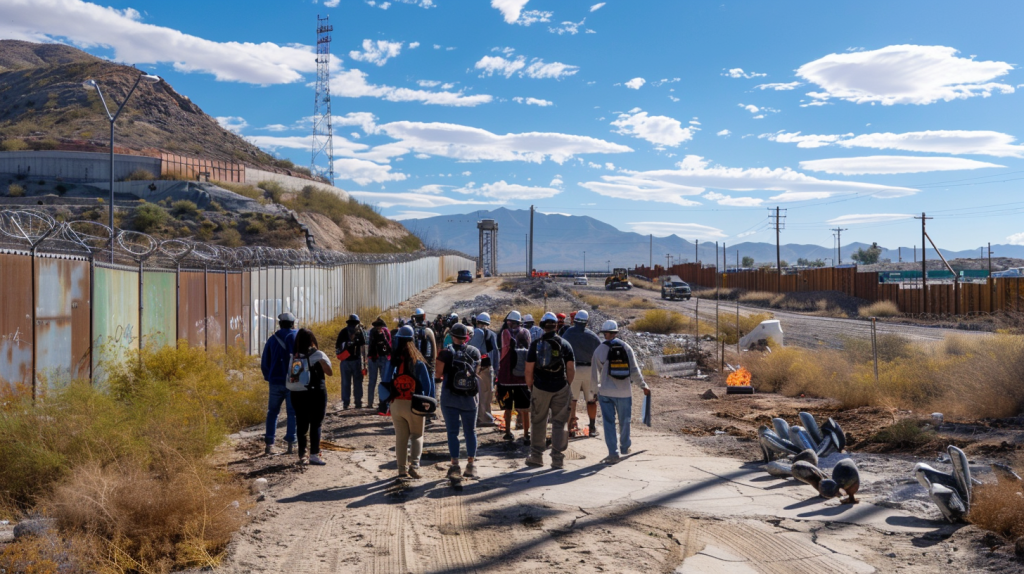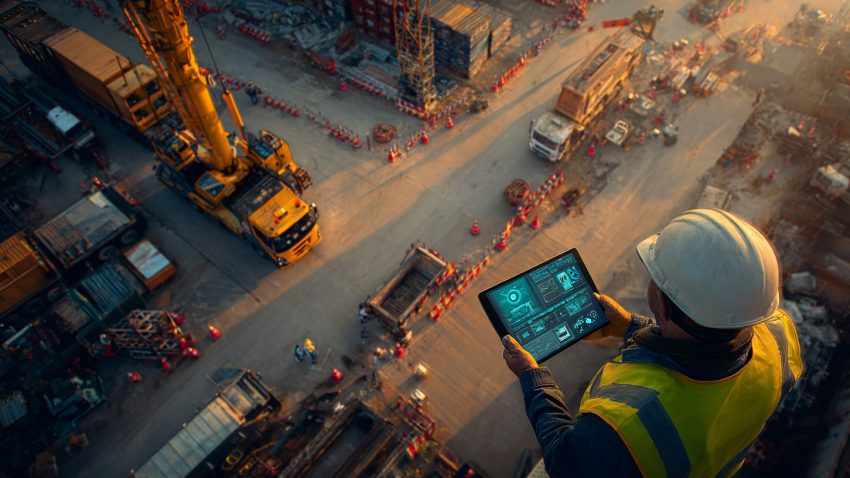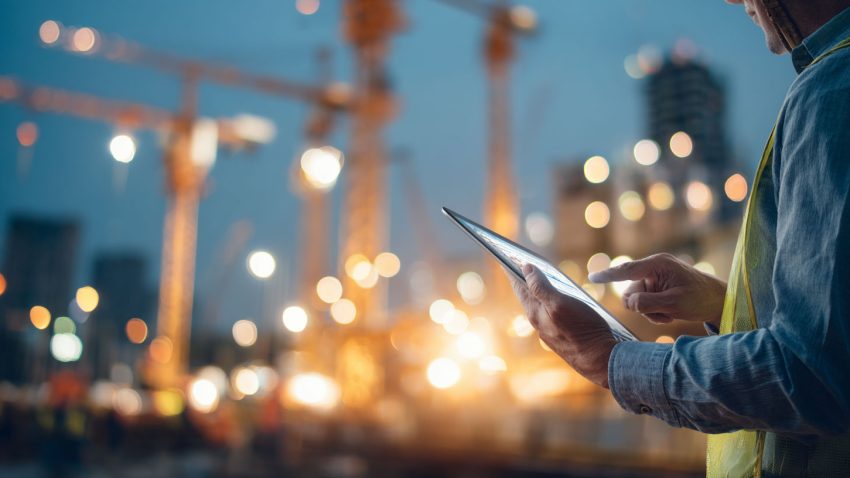San Luis Port of Entry: How Construction Innovation is Shaping the Future of U.S. Border Stations
Table of Contents:
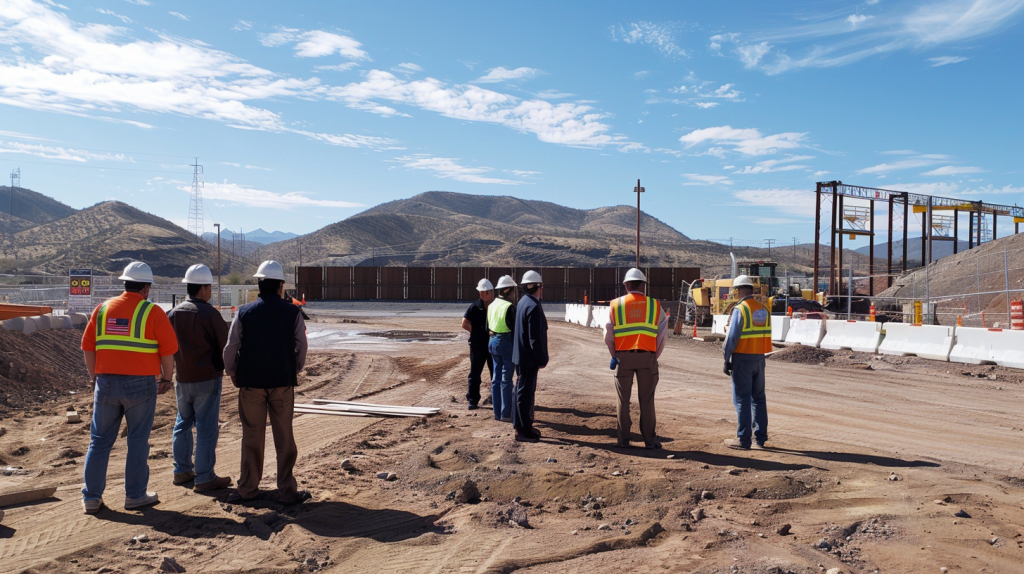
What Makes the San Luis Port of Entry Vital to U.S. Border Security?
The Taj Mahal of Border Crossings: San Luis Port of Entry’s Impact on Immigration and Trade
The San Luis Port of Entry plays a crucial role in U.S. border security, serving as a major checkpoint between the United States and Mexico. This facility not only manages the flow of people and goods across the border but also serves as a critical line of defense against illegal activities. As border security remains a top priority for the U.S. government, the importance of maintaining and modernizing this port cannot be overstated. The station’s strategic location and high volume of traffic make it a key component in national security efforts.
Key Benefits
- Increased Security Capabilities
Enhanced construction designs, such as blast-resistant materials and reinforced structures, significantly improve the port’s ability to withstand threats, ensuring the safety of border personnel and travelers. - Efficient Traffic Management
Modernized lane configurations and advanced traffic control systems reduce congestion, allowing for faster and safer passage of vehicles and pedestrians. - Enhanced Surveillance Systems
Integration of state-of-the-art surveillance technologies, such as drones and AI-driven monitoring, provides comprehensive coverage of the border, improving threat detection and response times. - Sustainable Design Practices
The incorporation of energy-efficient systems and materials reduces the port’s environmental footprint, aligning with broader sustainability goals. - Cost-Effective Operation
The use of modern construction methods, such as prefabricated components, reduces long-term maintenance costs and improves the overall durability of the infrastructure.
Best Practices
- Collaborate with Security Experts
Engage with security professionals during the design and construction phases to ensure that all structures meet the highest security standards. - Incorporate Flexible Design
Design facilities with future adaptability in mind, allowing for quick adjustments in response to changing security needs or traffic patterns. - Leverage Advanced Technologies
Integrate cutting-edge surveillance and traffic management technologies into the construction process to enhance overall operational efficiency. - Prioritize Environmental Considerations
Use sustainable materials and design practices from the outset to minimize the environmental impact of the construction and operation of the port. - Regularly Update Security Protocols
Continuously review and update security measures to keep pace with emerging threats, ensuring that the port remains a secure entry point into the United States.
Leveraging Construction Innovation for Enhanced Border Efficiency
Construction innovation is a driving force behind the enhanced efficiency of border stations like the San Luis Port of Entry. By integrating new technologies and adopting modern construction practices, these facilities can process a higher volume of traffic with greater speed and accuracy. Efficiency is not just about moving people and goods faster; it’s also about ensuring that security measures are not compromised. The innovative approaches being applied at the San Luis Port of Entry are setting new standards for how border stations should be designed and operated.
Key Benefits
- Automated Systems
Automated processing systems reduce human error and speed up the inspection process, leading to faster throughput at the border. - Smart Infrastructure
The integration of smart technologies, such as sensors and data analytics, helps in real-time monitoring and decision-making, improving the overall efficiency of the port. - Streamlined Operations
Modern construction methods allow for more streamlined operations, reducing bottlenecks and ensuring a smoother flow of traffic. - Enhanced Resource Allocation
Efficient design and construction practices lead to better allocation of resources, ensuring that the port operates at optimal capacity. - Reduced Environmental Impact
The use of sustainable construction practices reduces waste and energy consumption, contributing to the overall efficiency of the border station.
Best Practices
- Adopt Lean Construction Techniques
Implement lean construction techniques to minimize waste and maximize efficiency throughout the construction process. - Utilize Prefabricated Components
Use prefabricated materials and components to reduce construction time and improve the quality and consistency of the build. - Integrate Automation Early
Plan for the integration of automated systems from the beginning of the project to ensure seamless implementation and operation. - Collaborate with Tech Providers
Work closely with technology providers to ensure that all systems are fully integrated and optimized for border operations. - Monitor and Adjust
Continuously monitor the performance of the port’s infrastructure and make adjustments as needed to maintain efficiency.
How Do Modern Construction Practices Improve Immigration Processes?
Modern construction practices are revolutionizing immigration processes at border stations like the San Luis Port of Entry. By incorporating advanced technologies and innovative design strategies, these practices are helping to create more efficient and secure environments for processing immigrants. This not only speeds up the immigration process but also ensures that security is maintained at the highest level. The improvements made through modern construction practices are critical in managing the increasing flow of people across the border and ensuring that immigration processes are both humane and effective.
Key Benefits
- Faster Processing Times
The use of automated systems and streamlined workflows reduces the time it takes to process individuals, allowing for more efficient immigration control. - Improved Data Management
Advanced data management systems enable faster and more accurate handling of immigration records, reducing the likelihood of errors and delays. - Enhanced Security Screening
Modern construction allows for the integration of advanced screening technologies, improving the detection of potential security threats during the immigration process. - Increased Capacity
The ability to process a larger number of people efficiently reduces overcrowding and improves the overall experience for those passing through the port. - Better Resource Utilization
Efficient design and construction practices ensure that resources are used effectively, leading to better management of personnel and technology.
Best Practices
- Integrate Technology Early
Plan for the integration of advanced technologies, such as biometric scanning and automated processing systems, from the outset of the project. - Design for Flexibility
Create spaces that can be easily adapted to handle fluctuating volumes of people, ensuring that the facility remains functional under varying conditions. - Focus on User Experience
Design the immigration processing areas with the user experience in mind, ensuring that the process is efficient and stress-free for travelers. - Collaborate with Immigration Authorities
Work closely with immigration authorities to ensure that the facility meets all necessary regulations and standards, leading to smoother operations. - Prioritize Security
Ensure that all construction practices prioritize security, integrating the latest technologies and materials to protect both personnel and travelers.
The Impact of Advanced Technology on Border Station Developments
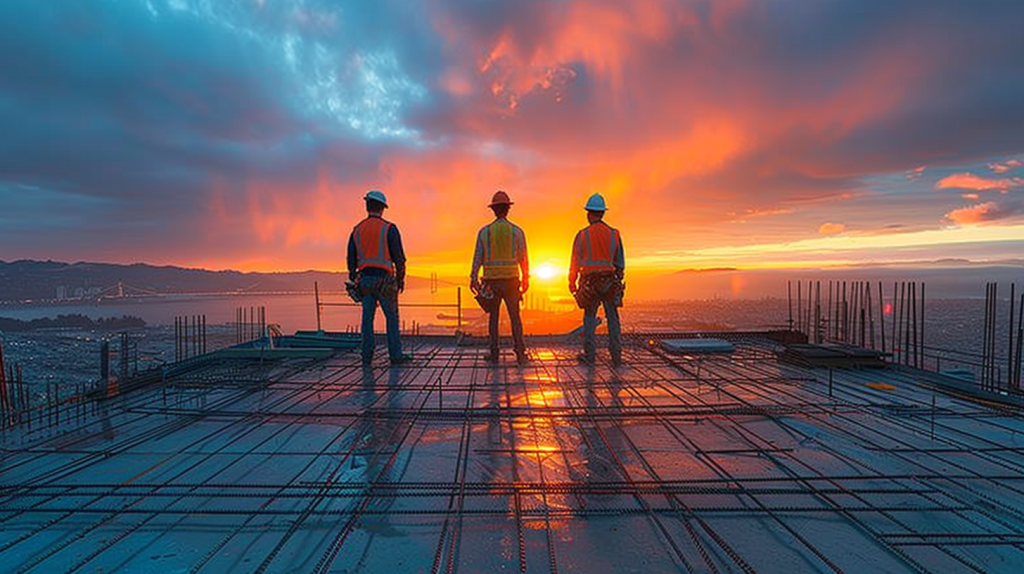
StruxHub
Experience the power of StruxHub today and witness firsthand how it can revolutionize your construction operations.
Advanced technology is playing a pivotal role in the development of modern border stations, including the San Luis Port of Entry. The integration of technologies such as artificial intelligence, biometrics, and automated systems is transforming how these stations operate, making them more efficient, secure, and responsive to the needs of travelers and border personnel. The impact of these technologies is far-reaching, affecting everything from traffic management to security protocols, and setting new standards for how border stations are designed and managed.
Key Benefits
- Improved Security Measures
The use of advanced surveillance and monitoring systems enhances the ability to detect and respond to potential security threats in real time. - Increased Efficiency
Automated systems and AI-driven processes streamline operations, reducing wait times and improving the overall efficiency of the border station. - Enhanced Data Collection
The integration of advanced data analytics allows for better tracking and management of traffic, improving decision-making and resource allocation. - Real-Time Monitoring
Advanced technology enables real-time monitoring of all areas within the border station, ensuring that issues are identified and addressed promptly. - Scalability
The use of modular and scalable technologies allows the border station to grow and adapt to changing needs without requiring significant overhauls.
Best Practices
- Implement AI-Driven Solutions
Utilize artificial intelligence to optimize traffic management and security protocols, ensuring that the border station operates efficiently. - Integrate Biometric Systems
Incorporate biometric systems into the design of the border station to enhance security and streamline the identification process. - Focus on Data Security
Ensure that all data collected is stored securely and complies with relevant regulations, protecting the privacy of travelers and personnel. - Plan for Future Growth
Design the border station with scalability in mind, allowing for the integration of new technologies as they become available. - Collaborate with Technology Providers
Work closely with technology providers to ensure that all systems are fully integrated and optimized for the unique needs of the border station.
Why Is Sustainable Design Essential for Future Border Infrastructure?
Sustainable design is becoming increasingly important in the development of future border infrastructure. As border stations like the San Luis Port of Entry are modernized, there is a growing emphasis on reducing their environmental impact while also improving their efficiency and functionality. Sustainable design practices, such as the use of renewable materials and energy-efficient systems, are critical to achieving these goals. By incorporating these practices into the construction of border stations, we can create facilities that are not only more environmentally friendly but also more cost-effective and resilient in the long term.
Key Benefits
- Reduced Environmental Impact
The use of sustainable materials and energy-efficient systems minimizes the environmental footprint of the border station, contributing to broader sustainability goals. - Lower Operating Costs
Energy-efficient systems reduce the long-term operating costs of the border station, making it more cost-effective to maintain. - Enhanced Durability
Sustainable design practices often lead to more durable structures, reducing the need for frequent repairs and maintenance. - Improved Public Perception
The use of sustainable practices in construction can improve the public perception of the border station, demonstrating a commitment to environmental responsibility. - Compliance with Regulations
Sustainable design helps ensure compliance with environmental regulations, reducing the risk of fines and penalties.
Best Practices
- Use Renewable Materials
Incorporate renewable materials, such as recycled steel and sustainable wood, into the construction of the border station to reduce its environmental impact. - Implement Energy-Efficient Systems
Install energy-efficient HVAC, lighting, and water systems to reduce energy consumption and operating costs. - Design for Longevity
Focus on creating durable structures that require minimal maintenance, reducing the long-term environmental impact of the border station. - Engage with Environmental Experts
Collaborate with environmental experts to ensure that all design and construction practices align with sustainability goals. - Plan for Future Upgrades
Design the border station with the flexibility to incorporate future sustainable technologies, ensuring that it remains environmentally friendly over time.
Collaborative Approaches to Modernizing the San Luis Port of Entry
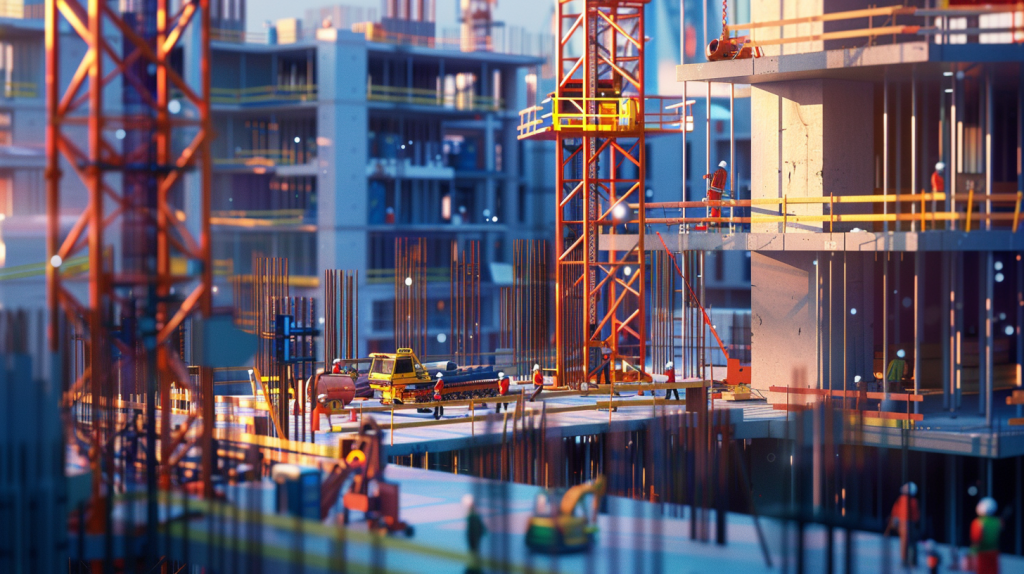
StruxHub: Revolutionizing Project Management in Large Commercial Construction
The modernization of the San Luis Port of Entry is a complex project that requires collaboration between multiple stakeholders, including government agencies, construction companies, and technology providers. By working together, these groups can ensure that the project is completed efficiently and meets the highest standards of security and functionality. Collaborative approaches are essential to addressing the challenges of modernizing such a critical piece of infrastructure, ensuring that all parties are aligned in their goals and strategies.
Key Benefits
- Improved Project Coordination
Collaboration between stakeholders leads to better coordination of the project, reducing delays and ensuring that all aspects of the modernization are aligned. - Enhanced Problem-Solving
Collaborative approaches allow for more effective problem-solving, as different stakeholders bring their expertise to address challenges as they arise. - Better Resource Allocation
By working together, stakeholders can allocate resources more efficiently, ensuring that the project stays on budget and on schedule. - Increased Innovation
Collaboration fosters innovation, as stakeholders share ideas and strategies to create more effective and efficient solutions for the modernization project. - Stronger Stakeholder Relationships
Working collaboratively helps build stronger relationships between stakeholders, leading to more successful project outcomes and future partnerships.
Best Practices
- Establish Clear Communication Channels
Create clear and open communication channels between all stakeholders to ensure that everyone is on the same page throughout the project. - Define Roles and Responsibilities
Clearly define the roles and responsibilities of each stakeholder to avoid confusion and ensure that all aspects of the project are covered. - Foster a Collaborative Culture
Encourage a culture of collaboration and teamwork among stakeholders, ensuring that everyone is committed to the success of the project. - Use Collaborative Tools
Utilize collaborative tools, such as project management software, to facilitate communication and coordination between stakeholders. - Regularly Review Progress
Schedule regular progress reviews to ensure that the project is on track and that any issues are addressed promptly.
The Role of Effective Construction Management in Transforming Border Stations

Effective construction management is key to the successful transformation of border stations like the San Luis Port of Entry. By overseeing all aspects of the construction process, from planning to execution, construction management ensures that projects are completed on time, within budget, and to the highest standards of quality. The role of construction management is particularly important in complex projects like border station modernization, where coordination between multiple stakeholders and adherence to strict security protocols are essential.
Key Benefits
- On-Time Project Delivery
Effective construction management ensures that the project is completed on schedule, minimizing disruptions to border operations. - Budget Control
By closely monitoring costs and managing resources efficiently, construction management helps keep the project within budget. - Quality Assurance
Construction management ensures that all work meets the highest standards of quality, resulting in a durable and reliable border station. - Risk Mitigation
Effective construction management identifies and mitigates risks early in the project, reducing the likelihood of delays and cost overruns. - Stakeholder Satisfaction
By delivering a high-quality project on time and within budget, construction management ensures that all stakeholders are satisfied with the outcome.
Best Practices
- Develop a Comprehensive Plan
Create a detailed project plan that outlines all aspects of the construction process, including timelines, budgets, and resource allocation. - Monitor Progress Regularly
Regularly monitor the progress of the project to ensure that it stays on track and that any issues are addressed promptly. - Foster Strong Communication
Maintain clear and open communication with all stakeholders throughout the project to ensure that everyone is informed and aligned. - Prioritize Safety
Ensure that all construction activities adhere to the highest safety standards, protecting workers and minimizing the risk of accidents. - Focus on Quality Control
Implement rigorous quality control measures to ensure that all work meets the required standards and that the final product is of the highest quality.
The modernization of the San Luis Port of Entry exemplifies how innovative construction practices and advanced technologies are shaping the future of U.S. border stations. As these developments continue to set new standards for efficiency, security, and sustainability, they highlight the critical role of effective management and collaboration in executing such complex projects. By embracing these advancements, border stations can better serve their vital role in national security and trade, ensuring that they remain resilient and adaptable in the face of future challenges.
Empowering Your Team with StruxHub
Ongoing training and support are essential for empowering construction teams and ensuring project success. By investing in comprehensive training programs, promoting continuous learning, and providing dedicated support services, StruxHub helps construction professionals maximize software utilization and achieve better project outcomes. Embrace these tips and strategies to empower your team and drive project success.
StruxHub enhances efficiency and coordination across all project phases, providing a single source of truth that eliminates silos and fosters collaboration. Real-time updates, financial management tools, and seamless commvunication features ensure that all team members and stakeholders are aligned and informed, reducing the risk of errors and delays. With comprehensive solutions for document management, risk mitigation, and quality control, StruxHub maintains project integrity and safety, while mobile access and integration capabilities further enhance project flexibility and efficiency.
StruxHub’s Key Features and Benefits:
- Advanced Delivery Management: Automate and optimize your delivery schedules, ensuring materials arrive just in time, every time.
- Site Communication: Utilize georeferenced maps and instant messaging to keep every team member informed and aligned.
- Construction Materials Management: Track inventory levels and manage materials procurement with ease, reducing waste and avoiding project delays.
- Construction Safety & Inspection Workflows: Implement customizable mobile forms for conducting safety inspections and managing compliance documentation effortlessly.
- Short-Term Scheduling: Visualize project tasks with detailed floor plans, linking each activity to specific locations for better planning accuracy.
- Construction Resource Management: Efficiently allocate personnel and equipment, maximizing productivity and reducing idle time.
StruxHub’s Product Offering:
- StruxHub Deliveries: Simplifies the coordination of incoming deliveries, ensuring materials and equipment are precisely timed to project needs.
- StruxHub Logistics: Offers intelligent site logistics planning, from crane scheduling to space allocation, for smoother operations.
- StruxHub Safety: Elevates on-site safety standards with easy-to-use tools for inspections, permits, and incident reporting.
- StruxHub Scheduling: Enhances project timelines with intuitive scheduling tools that ensure tasks are completed efficiently and on time.
With StruxHub, construction companies can look forward to a streamlined, more efficient project execution that delivers on time and within budget. Embrace the power of innovation and take your construction projects to the next level.
Don’t miss out on the opportunity to optimize your construction management processes with StruxHub. Sign up for a free demo today. Let’s build smarter, together.

StruxHub
Discover how StruxHub can revolutionize your construction management. Contact us today!
FAQs
What makes the San Luis Port of Entry a model for future border stations?
The San Luis Port of Entry is considered a model for future border stations due to its innovative construction practices, integration of advanced technologies, and emphasis on sustainability. By adopting these modern approaches, the port has improved its efficiency, security, and environmental impact. This sets a new standard for how border stations should be designed and operated, ensuring that they can meet the demands of the future while maintaining the highest levels of safety and functionality.
Additionally, the port’s design incorporates flexible infrastructure that can adapt to future technological advancements, further solidifying its status as a benchmark for future developments. This forward-thinking approach is crucial in maintaining long-term operational effectiveness and relevance as border security needs continue to evolve.
How does technology improve the efficiency of border stations like the San Luis Port of Entry?
Technology plays a critical role in improving the efficiency of border stations by automating processes, enhancing surveillance, and optimizing resource allocation. For example, the use of AI-driven traffic management systems and biometric identification technologies speeds up the flow of people and goods, reducing wait times and improving overall throughput. These advancements not only enhance operational efficiency but also ensure that security measures are upheld without compromising the speed of processing.
Moreover, the integration of real-time data analytics allows for more informed decision-making, enabling border stations to respond quickly to changing conditions. This capability is essential in managing the dynamic environment of border operations, where traffic volumes and security threats can fluctuate rapidly.
What are the key benefits of sustainable design in border station construction?
Sustainable design in border station construction offers several key benefits, including reduced environmental impact, lower operating costs, and improved public perception. By incorporating energy-efficient systems, renewable materials, and durable construction practices, sustainable design minimizes the long-term environmental footprint of the facility. Additionally, these practices lead to cost savings over time, as the facility requires less energy and maintenance, making it a more economically viable option.
Furthermore, sustainable design enhances the resilience of border stations, enabling them to withstand environmental challenges such as extreme weather conditions. This resilience not only protects the infrastructure but also ensures the continuous operation of critical border functions, even under adverse conditions.
How does collaboration enhance the modernization of border stations?
Collaboration is essential in the modernization of border stations, as it brings together the expertise of various stakeholders, including government agencies, construction companies, and technology providers. This collaborative approach ensures that all aspects of the project are aligned and that challenges are addressed promptly and effectively. By fostering strong communication and teamwork, collaboration leads to better project outcomes, including improved efficiency, innovation, and stakeholder satisfaction.
In addition, collaboration allows for the sharing of best practices and lessons learned from previous projects, which can be applied to the current modernization efforts. This exchange of knowledge contributes to the continuous improvement of border station infrastructure, ensuring that each project benefits from the collective experience of all involved parties.
Why is construction management crucial for successful border station projects?
Construction management is crucial for the successful execution of border station projects because it oversees the entire construction process, ensuring that the project is completed on time, within budget, and to the highest standards of quality. Effective construction management also mitigates risks, manages resources efficiently, and ensures that all stakeholders are satisfied with the final outcome. In complex projects like border station modernization, where multiple stakeholders are involved and strict protocols must be followed, the role of construction management is indispensable.
Effective construction management also includes continuous monitoring and adaptation to the specific needs of the project. By being responsive to unforeseen challenges and changes in scope, construction managers can ensure that the project remains aligned with its original goals while still accommodating necessary adjustments.
